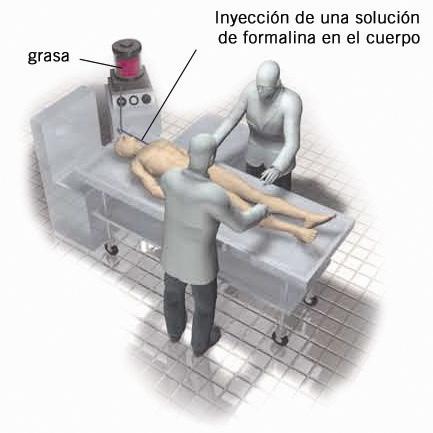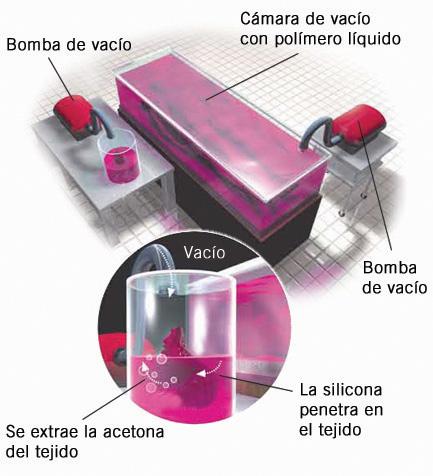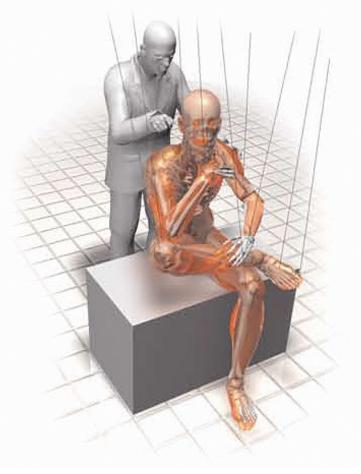

What is Plastination?
Plastination is a relatively simple process designed to preserve the body for educational and instructional purposes. Plastination, like many revolutionary inventions, is simple in concept:
The Method of Plastination
1. Embalming and Anatomical Dissection
The first step of the process involves halting decay by pumping formalin into the body through the arteries. Formalin kills all bacteria and chemically stops the decay of tissue. Using dissection tools, the skin, fatty and connective tissues are removed in order to prepare the individual anatomical structures.

2. Removal of Body Fat and Water
In the first step, the body water and soluble fats are dissolved from the body by placing it into a solvent bath (e.g., an acetone bath).

3. Forced Impregnation
This second exchange process is the central step in Plastination. During forced impregnation a reactive polymer, e.g., silicone rubber, replaces the acetone. To achieve this, the specimen is immersed in a polymer solution and placed in vacuum chamber. The vacuum removes the acetone from the specimen and helps the polymer to penetrate every last cell.

4. Positioning
After vacuum impregnation, the body is positioned as desired. Every single anatomical structure is properly aligned and fixed with the help of wires, needles, clamps, and foam blocks.

5. Curing (Hardening)
In the final step, the specimen is hardened. Depending on the polymer used, this is done with gas, light, or heat. Dissection and Plastination of an entire body requires about 1,500 working hours and normally takes about one year to complete.


